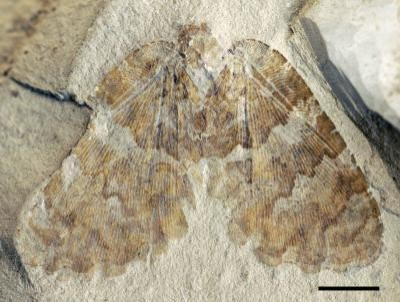Ancient Silky Lacewing Insects Fossil Discovered

Researchers have stumbled upon fossil remains of the 120-million-year-old ancient silky lacewings insect from Mesozoic origins of China.
The new findings document the existence of a new genus and species of Psychopsidae from the early Cretaceous Yixian Formation of Huangbanjigou Village, Liaoning Province, China.
A team of researchers from the Capital Normal University in Beijing (China) and the Institute of Biology and Soil Sciences in Vladivostok (Russia) have discovered the ancient remains of the extant silky lacewings insect, classified under the family Psychopsidae.
This new breakthrough is a likely precursor for further investigations that could probably shed more light on the evolutionary history of lacewings related to the family Psychopsidae. This new genus differs from all other psychopsids by possessing undulate outer and hind margins of both wings.
These insects are characterized by their broad wing shape, dense venation, spectacularly patterned and hairy wings. The research team states that in recent times, this family is very small and is restricted to southern Africa, south eastern Asia and Australia. These insects were more wide spread during the Mesozoic period.
The study, published recently in the open access journal ZooKey, notes that the new fossil silky lacewing or Undulopsychopsis alexi was found during the Yixian Formation of western Liaoning Province, one of the most productive Mesozoic fossil-bearing horizons in China.
The most important trait of this fossil is that it shares the features of two different families of neuropteran insects, the extant Psychopsidae (known also from the Mesozoic) and the extinct Mesozoic Osmylopsychopidae, said lead author Vladimir Makarkin.
The combination of a small number of known extant species and the often poor preservation of fossil representatives has greatly hindered the understanding of fossil psychopsids. The ambiguous diagnoses of many fossil psychopsids have resulted in potential confusion with other Mesozoic neuropterans, note study authors.
Although more evidence is essential to further the knowledge of fossil psychopsids, the study team says that the new findings on Mesozoic psychopsids described from Asia, particularly from Russia and China, have drawn increased attention to fossil psychopsids.
© Copyright IBTimes 2024. All rights reserved.





















